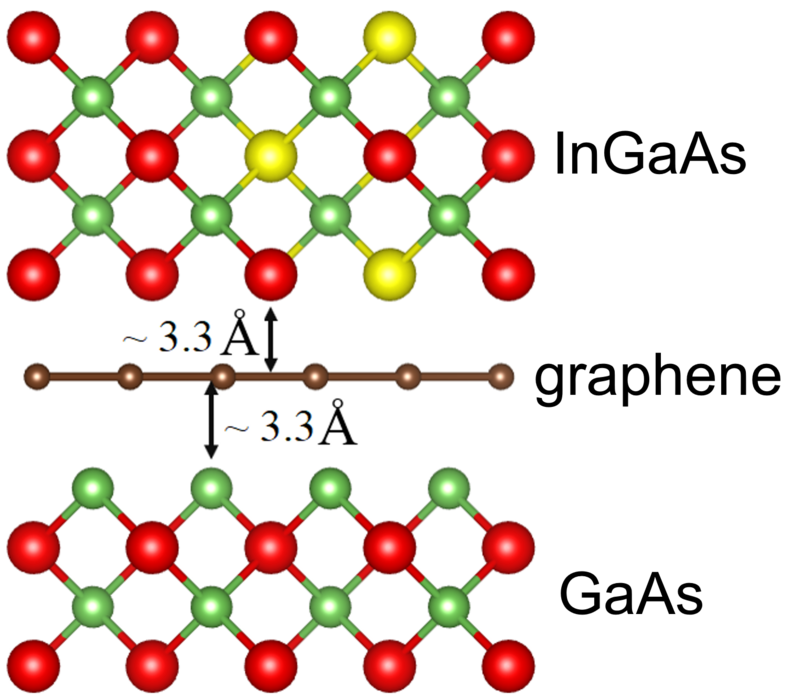Dr. Tobias Henksmeier, PostDoc in the workgroup for optoelectronic materials and components of Prof. Dr. Dirk Reuter, has received one of the three awards for the best poster of the section for condensed matter. The poster prizes, each endowed with 200 €, are awarded every year at the annual conference of the condensed matter section of the German Physical Society (Deutsche Physikalische Gesellschaft, DPG). This year, a total of over 1100 posters were presented.
The award-winning poster was entitled "Remote Heteroepitaxy of InXGa1-XAs on Graphene Covered GaAs(001) Substrates".
In the poster, Henksmeier presents a production method of InxGa1-xA's crystal structures on GaA's substrates using heteroepitaxy on graphene, which he developed in cooperation with colleagues from Magdeburg and Warwick (see figure). Such methods are used in the production of state-of-the-art semiconductor components, which are made of special crystals. "We investigated what happens when the heteroepitactically grown layer is minimally separated from the substrate by applying a layer of graphene in order to reduce the tension of the layer so that ultimately the performance of the structure can be improved," says Henksmeier.
In the method presented, a layer of graphene is applied to the substrate and then overgrown. A more homogeneous and, above all, stronger relaxation of the layer is observed. The method is based on findings from Henksmeier's dissertation, which he wrote in the Collaborative Research Centre Transregio 142.
Original publication
T. Henksmeier, J.F. Schulz, E. Kluth, M. Feneberg, R. Goldhahn, A.M. Sanchez, M. Voigt, G. Grundmeier, D. Reuter. Remote epitaxy of InxGa1-xAs (001) on graphene covered GaAs(001) substrates.Journal of Crystal Growth 593, 126756 (2022)


